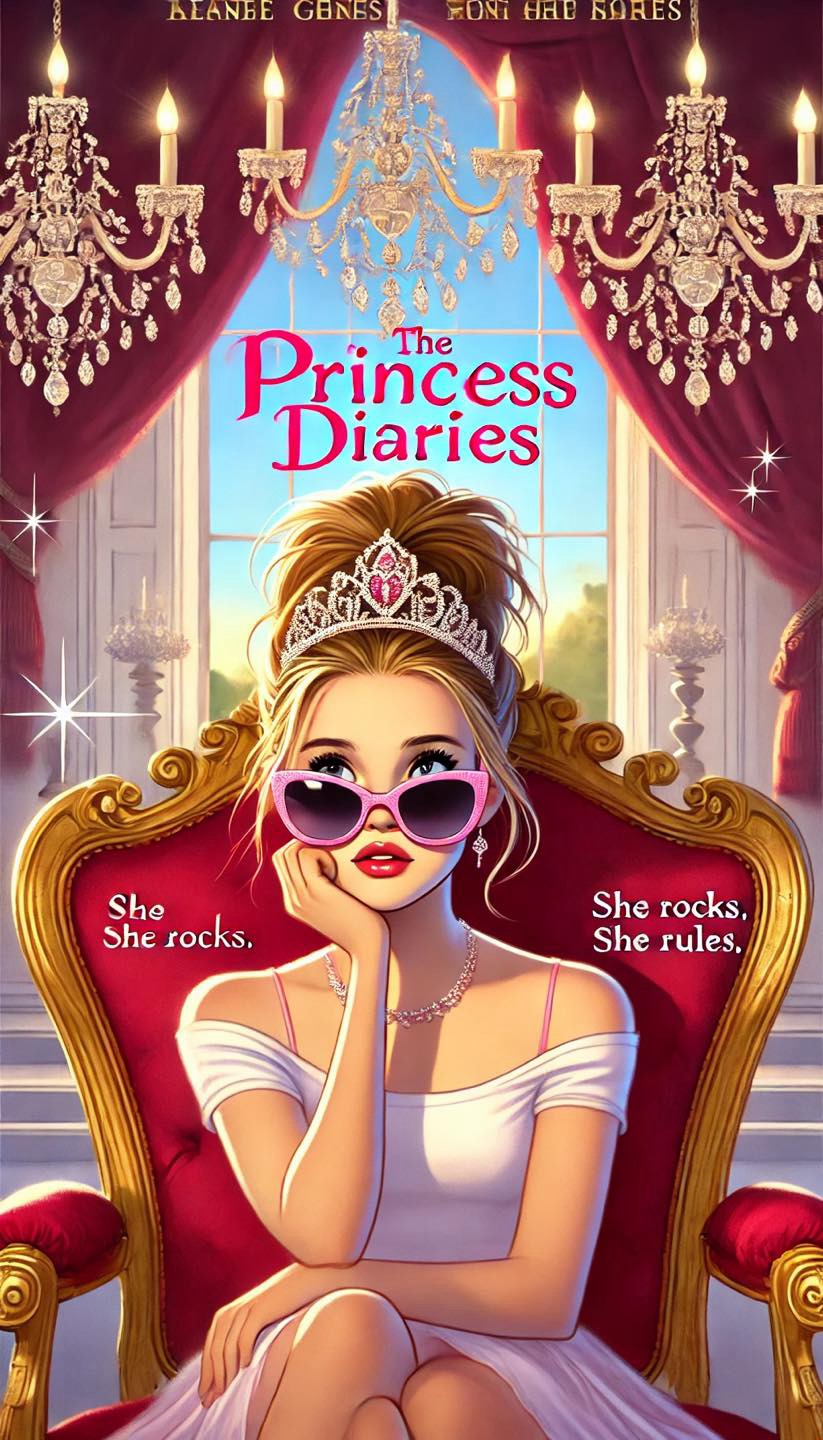The princess diaries (2001)

The Princess Diaries (2001), directed by Garry Marshall, is a coming-of-age comedy-drama that launched Anne Hathaway’s career and has since become a beloved classic in family cinema. Adapted from Meg Cabot’s bestselling novel, the film combines humor, charm, and heart as it tells the story of Mia Thermopolis, a shy, awkward teenager who discovers she’s the heir to the throne of the fictional European country, Genovia. With a relatable protagonist, endearing characters, and a light-hearted plot, The Princess Diaries has a timeless appeal for audiences of all ages.
Suggested videos for you:
Plot Summary
The story centers on Mia Thermopolis (Anne Hathaway), a socially awkward and insecure high school student living in San Francisco. Her life is typical for a teenager: she struggles with self-confidence, endures the antics of popular kids, and relies on her close friend Lilly (Heather Matarazzo) for support. Mia’s world is turned upside down when her estranged grandmother, Queen Clarisse Renaldi (Julie Andrews), arrives to inform her that she is, in fact, the princess of Genovia. Thrust into royal training, Mia faces the daunting task of preparing for a future she never imagined, all while keeping her newfound identity a secret from her classmates.
As Mia navigates lessons on poise, etiquette, and diplomacy, she also contends with the demands of high school life, including bullies, crushes, and embarrassing mishaps. She must ultimately decide whether she’s ready to embrace her new role as a princess or stay with the life she knows.
Themes
The Princess Diaries explores themes of self-discovery, identity, and the courage to accept one’s unique qualities. Mia’s transformation isn’t just about becoming a princess; it’s about learning to see herself as someone worthy of respect and love. The film’s underlying message is that true royalty is about kindness, self-confidence, and being true to oneself—qualities that Mia learns to embrace as she grows.
Additionally, the film tackles the challenges of adolescence, including peer pressure and the desire for acceptance. Mia’s journey resonates with anyone who’s ever felt awkward, uncertain, or overlooked. Her rise from self-doubt to self-assurance offers a heartwarming message that being different is not a weakness, but a strength.
Performances
Anne Hathaway shines in her breakout role as Mia Thermopolis, bringing a genuine and relatable quality to the character. Hathaway’s portrayal of Mia as a quirky, lovable underdog is endearing, making her journey from “ordinary girl” to royalty feel authentic. Her comedic timing and ability to convey Mia’s insecurities with sincerity add depth to a role that could have easily been played for pure laughs.
Julie Andrews as Queen Clarisse Renaldi is a highlight of the film. Her elegance and warmth add gravitas to the character, while her dry humor and patience make her interactions with Mia both amusing and heartfelt. Andrews brings a balanced presence, blending authority with compassion as she guides Mia through her transformation.
The supporting cast, including Heather Matarazzo as Mia’s outspoken best friend Lilly and Mandy Moore as the snobby cheerleader Lana, adds to the film’s charm. Matarazzo’s and Hathaway’s chemistry is particularly engaging, creating a believable and refreshing portrayal of friendship that feels as central to the story as the royal elements.
Style and Direction
Garry Marshall’s direction gives the film a lively, upbeat tone, with plenty of humorous moments balanced by genuine sentiment. The film captures the beauty of San Francisco, using its hills and landmarks to establish a sense of place while contrasting with the opulence of Mia’s royal training. Marshall’s knack for blending comedy with heart shines here, making the film accessible to children and adults alike.
Marshall allows the story to be light-hearted and funny while still grounded enough to feel realistic. The comedic set pieces—such as Mia’s disastrous attempts at royal protocol and etiquette—are handled with a warm, family-friendly touch that never feels mean-spirited. His approach to the “makeover” trope is refreshingly positive, as Mia’s transformation is portrayed not as a shallow change, but as a reflection of her inner growth.
Narrative and Pacing
The film follows a classic Cinderella storyline, complete with a rags-to-riches transformation and lessons in self-worth. While the plot is predictable, the characters and their relationships make the journey enjoyable. The pacing is brisk, keeping the story engaging and moving from one comedic or heartfelt moment to the next.
The movie does, however, lean heavily into clichés, with some high school stereotypes and romantic subplots that feel formulaic. For instance, the romantic arc with Mia’s crush, Josh, and her later realization about the true worth of Michael, Lilly’s brother, follows a well-worn path. Nonetheless, these elements are handled with a playful touch that keeps them charming rather than stale.
Appeal and Cultural Impact
The Princess Diaries has become a cultural touchstone for its optimistic and heartwarming message. The film’s blend of humor and empowerment has resonated with audiences, particularly young girls, for whom Mia’s journey provides a positive example of embracing individuality. It has also achieved lasting popularity as a quintessential “feel-good” movie, with scenes and lines that remain iconic in popular culture.
Final Thoughts
The Princess Diaries is a delightful, family-friendly film that stands the test of time thanks to its engaging story, charming performances, and positive messages. While it may rely on familiar tropes, its warmth and humor make it a memorable movie experience. Hathaway’s endearing performance and Andrews’ graceful presence elevate the film beyond its simple premise, creating a modern-day fairytale that celebrates self-confidence, friendship, and the courage to embrace one’s uniqueness.
For anyone looking for a lighthearted film that combines comedy, charm, and inspiration, The Princess Diaries is a classic worth revisiting. It’s a testament to the idea that true royalty lies in one’s character, not in titles or appearances—a message that continues to resonate with audiences of all ages.










